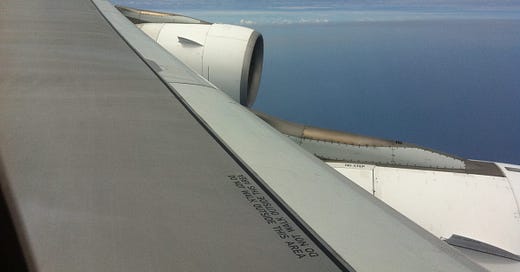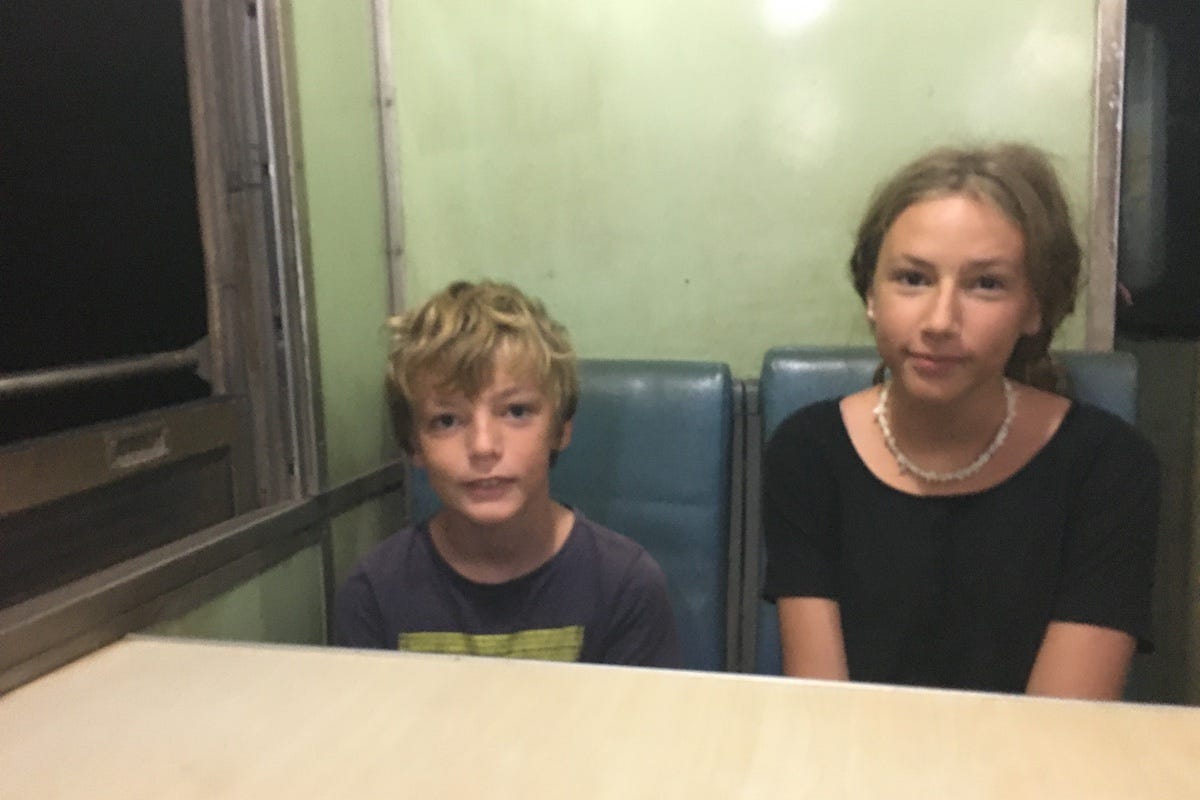Planning fingers are itching. Countries are starting to sort of reopen, each in their own, very individual manner. Google Maps is getting opened, wish lists peeled open. Before you go any further, I have some advice: Take the train—not the plane. Here’s why.
Thailand’s Civil Aviation Authority reports that in 2019 there were 16,564 one-way flights from Suvarnabhumi Airport to Chiang Mai. From Don Muang (Bangkok’s second airport), 22,069 one-way flights. That’s a total of 38,633 one-way flights or an average of about 106 per day. The full report is here, see pages 56 and 62 respectively. If you want to get stuck into flight loads and other flight trivia, this report from Airports of Thailand is also good.
Remember these? Photo: Stuart McDonald.
Sounds like a lot right? As the Google Maps crow flies, Suvarnabhumi is 594 km and Don Muang is 567 km from Chiang Mai Airport. The 737 is a popular aircraft with Low Lost Carriers. It also happens to be up to 42 metres long (there is some variation between models). To put these numbers into some perspective, grab a few 737s (38,633 to be exact) and line them up tip to tail. The total length? 1,622 kilometres. Go wild and crazy and line them up between Suvarnabhumi and Chiang Mai. You could then walk atop the fuselages to Chiang Mai, back to Bangkok, and three-quarters of the way to Chiang Mai again.
Seems like a lot.
Back in 2005, the UNWTO and UNEP produced a Climate Change and Tourism study. The report said tourism’s transport-related CO2 emissions accounted for about 18% of the total for transport. These came from 9.7 billion tourist trips, of which 750 million were international arrivals. That is, just getting to where you’re going to have a holiday.
I’d like to double down on my CO2. Photo: Stuart McDonald.
Thanks to a new report, released in 2019, we can fast forward to 2016. International tourist arrivals are now 1.2 billion. The total tourist trips? Around twenty billion. This in turn pushed tourism’s share of transport-related CO2 emissions to 22%. The report is quite dense—the above is paraphrased from page 43.
Seems we are going in the wrong direction.
Literature suggests that transport accounts for around 75% of tourism’s CO2 emissions. Air travel for about 40% of that. Long haul flights—as a product of the distances involved—are the worst culprits. According to this story, a flight from London to New York emits more CO2 than a typical person in any one of 56 countries —in a year.
Super-sized for super-vandals. Photo blurry as I wasn’t supposed to be there. Photo: Stuart McDonald.
Anyway, I’m sure you already know this. You’re aware of the issues involved in long-distance flying. You already fly cattle-class, don’t pack the kitchen sink and carbon offset. You use a calculator thingy that makes you feel bad if you do anything but walk. That’s great. I’m not here to rant about flying long haul.
I’m here to rant about flying domestic.
Like a 737 in a stack above Don Muang (who hasn’t been there?) I’m going to circle back to my point up top. A 1,622 kilometre-long line of 737s tip to tail.
Now everyone can train. Photo: Stuart McDonald.
If I was to line up said aircraft between the two Thai cities, I wouldn’t carve a new path through rice fields. While it isn’t the most direct route, I’d line them along the train line. Less environmental damage and all that?
Wait what? There’s a train line?
There sure is.
You can jump on a train in the early evening in Bangkok and wake up in Chiang Mai in the morning.
My kids love the Thai train system—as you can no doubt tell from this photo. Photo: Stuart McDonald.
Better still, you could break up the trip.
You could stop at Ayutthaya and visit a historic capital.
You could get off at Lopburi and see eighty-two bazillion macaques who will steal your water bottle.
You could get off at Phitsanulok and visit national parks, or catch a bus to Sukhothai or Kamphaeng Phet.
You could get off at Den Chai for the short run up to Phrae and then onwards to go trekking around Nan in Thailand’s far north.
You could get off at Lampang for beautiful temples and terrific food.
That’s just five options—there are plenty more.
Avoid airline food. Win! Photo: Stuart McDonald.
Sure it will cost roughly the same, if not more than a flight with a low-cost carrier. It will also take longer—around ten hours longer.
But your CO2 emissions will be a fraction of what they will be with an AirAsia flight. According to this site, diesel trains emit less than buses (and are less nerve-wracking). They also emit a fraction of that of flying.
You’ll also see more of the country—from three metres instead of 35,000 feet. You’ll meet more Thai people. You’ll get to eat non-airline Thai food.
You’ll have the chance to get off at the wrong stop and explore Nakhon Nowhere.
You can meet chatty locals. Photo: Stuart McDonald.
You’ll travel slower, see more places, and not vandalise the planet in the process.
Travel is starting to inch forward. People are starting to plan itineraries they’ve been waiting 18 months to do. Take a look at your itinerary—if it involves a domestic flight, think again. Get out an atlas, look at what is in between.
Break the trip up. Slow down, see more.
Back up top, when I mentioned the volume of flights to Chiang Mai, there were other bonkers busy routes. In particular Ko Samui (15,302 flights) and Phuket (19,822 flights) ex Suvarnabhumi. Ex Don Muang, there’s Hat Yai (15,340 flights), Phuket (19,415 flights), Ubon Ratchathani (9,410 flights) and Udon Thani (10,638 flights). Of these, only Phuket and Ko Samui are not on a rail line. You can get close to both by train.
If you’re stuck for ideas, take a look at the following stories.
Before you know it, a domestic flight will be out of your mind. Instead, you’ll be trying to figure out how to wangle the extra leave from the boss. Best of all, the planet will thank you.
Couchfish is 100 per cent independent and reader-supported. If you’re not already a subscriber, and you’d like to show your support, become a paying subscriber today for just US$7 per month—you can find out more about Couchfish here—or simply share this story with a friend.
Don’t forget, you can find the free podcasts on Apple, Pocket Casts and Spotify as well as right here on Couchfish.




















Share this post